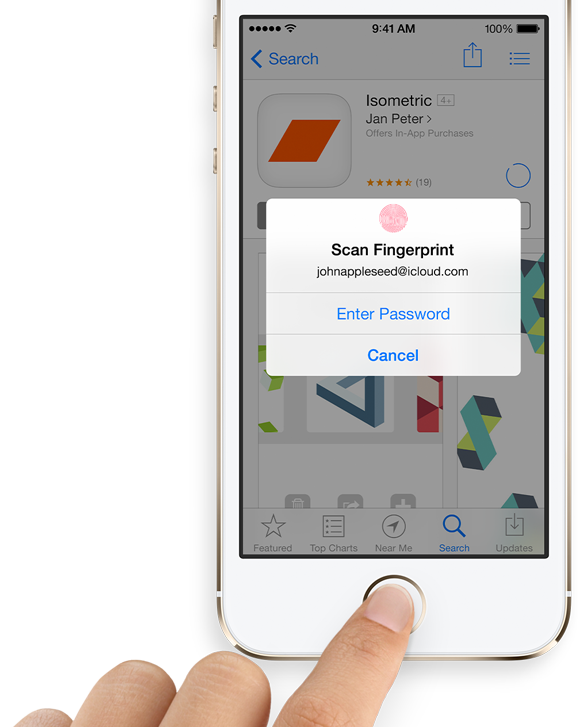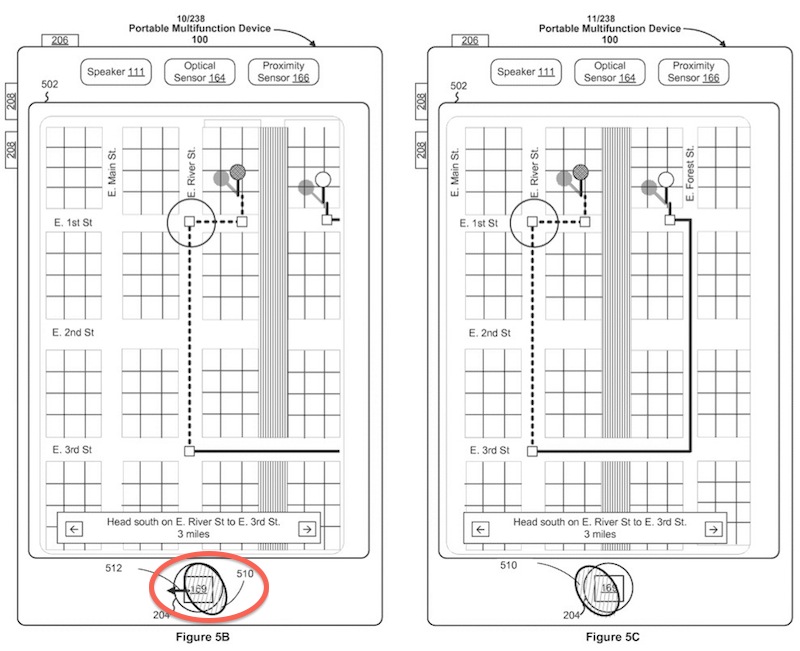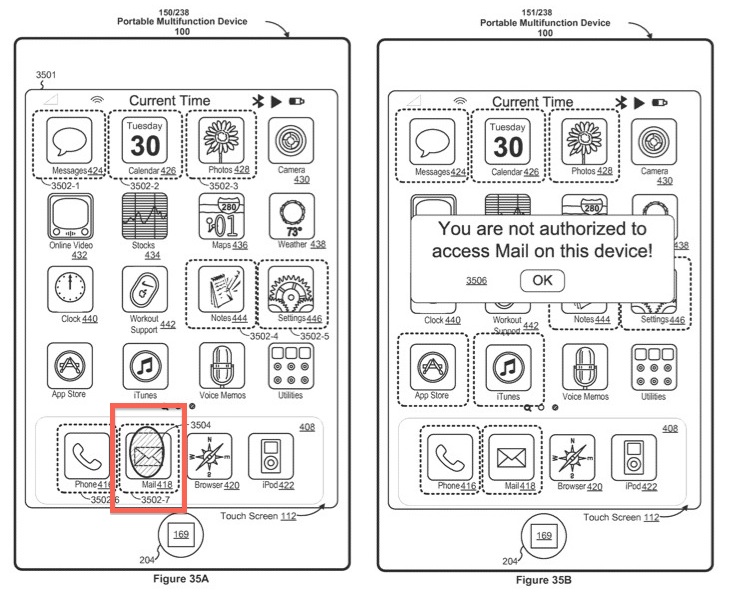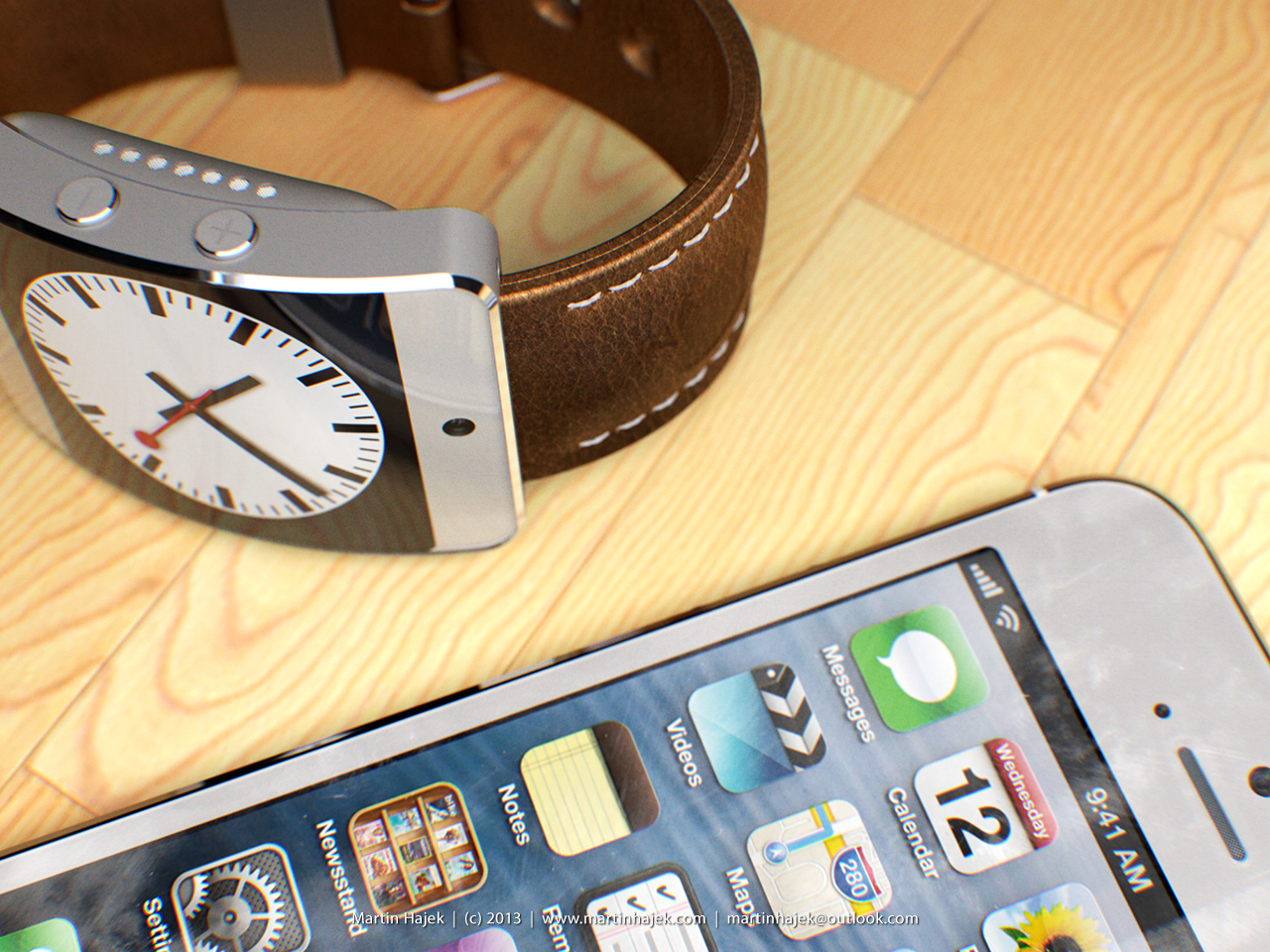Last week, Patently Apple shed light on an Apple patent filed with the United States Patent and Trademark Office which covers the various aspects of its Touch ID fingerprint scanner, a new feature exclusive to the iPhone 5s.
The invention is entitled Capacitive Sensor Packaging and details collapsing the full fingerprint maps into a hashed, encrypted data securely stored on the A7 chip’s Secure Enclave. It’s curious that the patent’s main inventor, Wayne Westerman, developed Multi-Touch technology at Fingerworks, a startup Apple snapped up in 2005.
In another massive 612-page patent application Apple filed with the World Intellectual Property Organization in May 2013, the iPhone maker indicates it’s been researching mobile screens with Touch ID embedded, along with trackpad capabilities allowing for panning of on-screen content by moving your finger over the Touch ID Home button…
Eric Slivka, writing for MacRumors, highlights one embodiment explaining how moving your finger right to left across the Touch ID-enabled Home button could pan a map.
It gets better: you could move your finger upward across the Home button to invoke the iOS multitasking interface (as illustrated below), which is normally triggered by double-pressing the Home button.
Other examples show how users could take advantage of “revolving” or “twisting” motions of their fingerprints on the Touch ID Home button to initiate actions.
Adding the ability to recognize presses of various durations for the Touch ID home button and even sensors for detecting how hard the button is being pressed could offer even more powerful user interface navigation capabilities right from the Home button.
Where it gets really interesting is the possibility of integrating the Touch ID sensor right into a mobile device’s display. This means that future iOS devices could theoretically sport a display which doubles as a Touch ID fingerprint reader.
“In one example, the area of a display representing the device’s email app could require a valid fingerprint touching the icon in order for authorization to be granted,” he explains.
Actually, the well-informed Mark Gurman of 9to5Mac learned from his sources back in July that Apple has been experimenting with a technology which could embed a fingerprint reader into a high-resolution Multi-Touch display.
“Sources warn, however, that the technology to implement the sensor into a display will only be available multiple years into the future and it does not seem immediately intuitive to have a fingerprint reader on a watch,” he cautioned.
Apple’s invention covers other use cases, including:
- Enhanced touch typing recognition through sensing which fingers are touching the keys
- Using pressure and movement sensing to turn the home button into a simple game controller
- Using revolving “scroll wheel” motions on the home button to navigate through multitasking app listings
- Using fingerprint verification to enforce parental controls on age-rated media content, restrict maximum device volume, or automatically increase font sizes for children, seniors, or visually-impaired users
- Autofilling web forms or loading personalized web pages based on fingerprint identification
- Supporting multi-user profiles including authorized and guest profiles through fingerprint authorization
- Authorizing location “check-ins”, mobile payment information, or photo/document author tagging based on fingerprint identification
- Supporting simultaneous multi-user configurations by allowing users to define separate areas of a device’s screen for drawings, notes, or other content based on fingerprint recognition
Touch ID embedded into the display isn’t necessarily for the iPhone or iPad, mind you.
And now for some clarity.
My biggest gripe is failing to comprehend how letting us dynamically designate any area of the display as a sensing region for the fingerprint would be beneficial to anyone. Literally hundreds upon hundreds of millions of Apple users are now familiarized with the Home button. It’s because of this familiarity that Touch ID implementation on the iPhone 5s requires no learning curve whatsoever.
Changing our muscle memory to using the iPhone’s screen itself for fingerprint scanning – again, without any concrete UX benefit – would mark a step back in terms of user experience, methinks. I also fear that the costs associated with outfitting four-inch screens with Touch ID would prevent such technology from being mainstreamed on iPhones.
AppleInsider comes to the rescue – it could be useful for multi-user support and per-app security:
In the most basic user identification claim, the patent details a system for creating multiple individual user profiles — similar to user accounts found on OS X — and unlocking to the profile associated with a specific fingerprint. Apple even details a “guest mode,” a feature iPad owners have been clamoring for since the tablet’s release.
Permissions-based profiles make an appearance as well, with the patent contemplating a device shared by a family with young children. A tap from a child’s finger would not be allowed to open the Settings application, for instance, while a parent’s tap would be accepted.
Apple applies the same concept to app security on a broader level. Using a fingerprint sensor embedded in the display, the operating system can permit or deny access to individual users on a per-app basis — one user would be permitted to open a banking application, for example, while a different user would not, even without changing user profiles.
Also, enter iWatch.
Apple’s rumored wearable device is thought to include advanced biometric sensors which could be used for identity. And what better ID than one’s fingerprint? Bingo! As much as you probably can’t wrap your head around having a Home button on the iWatch, imagine if the device’s rumored 1.7-inch screen came with Touch ID embedded.
Now we’re talking, eh?
That would change the game completely and allow for just the kind of seamless and frictionless user experiences Apple is famous for. And if the company is really serious about mobile payment as its latest job post suggests, in the future people may be able to authorize mobile payments just by touching their iWatch’s Touch ID-enabled screen.
Does that sound too sci-fi for you?



